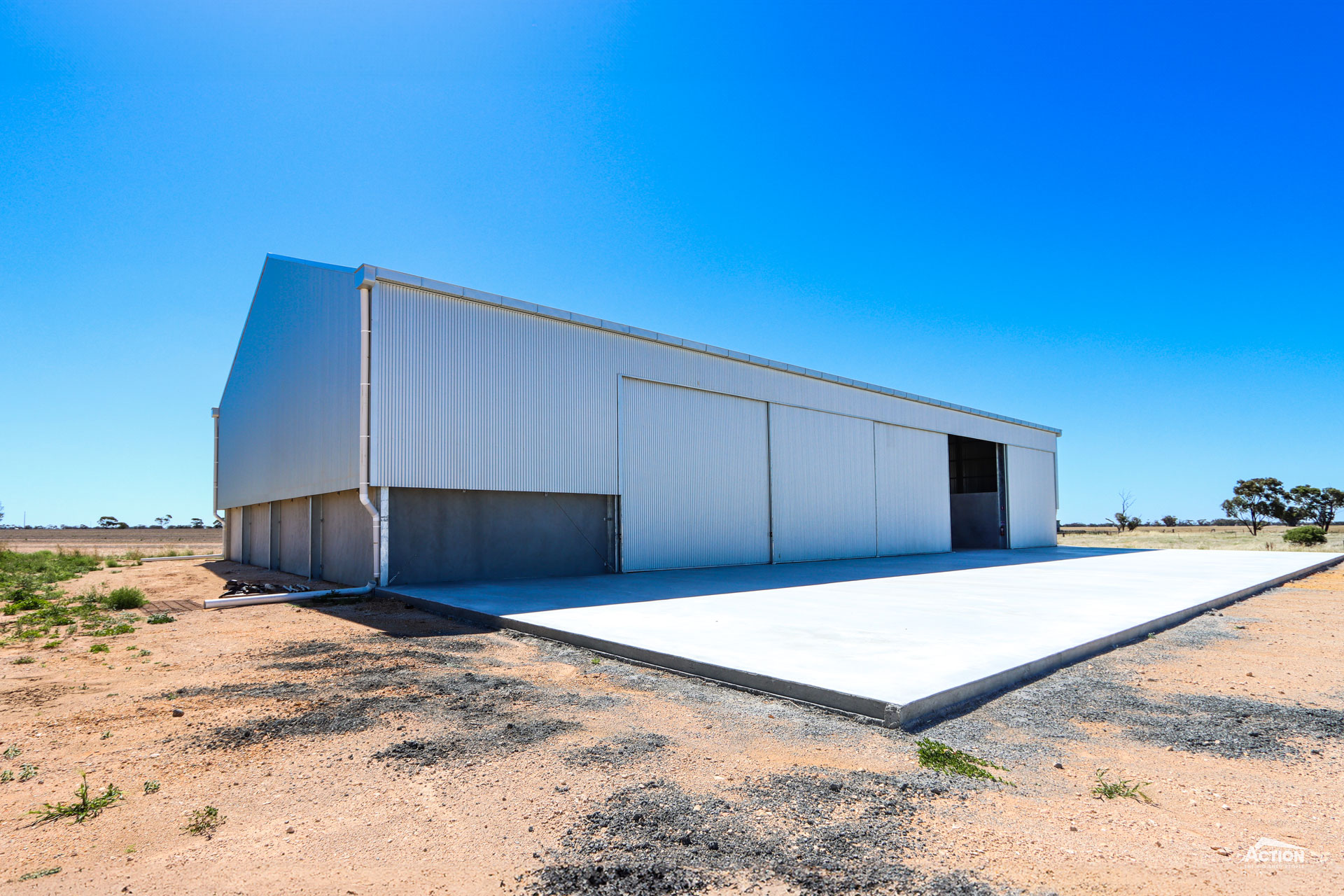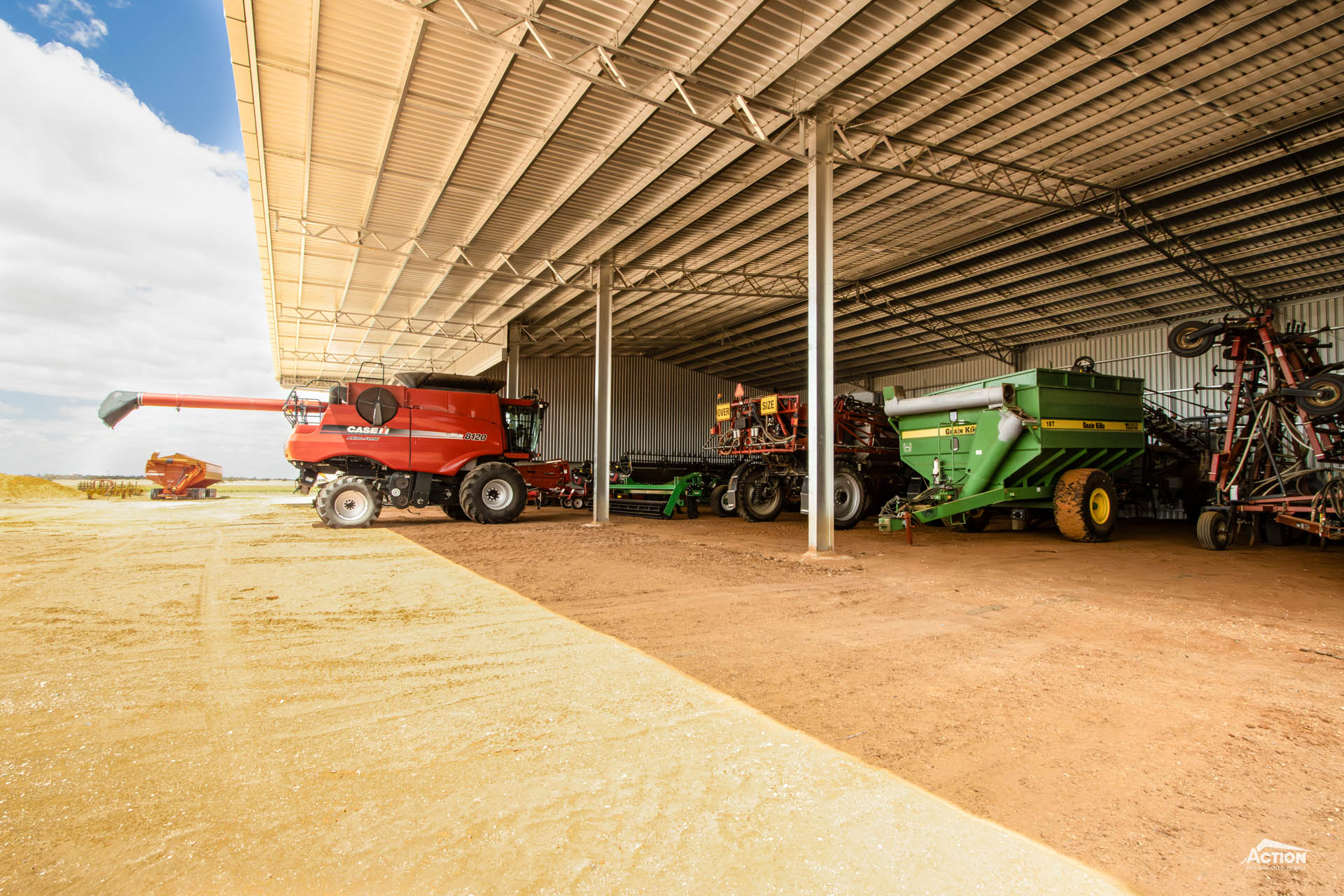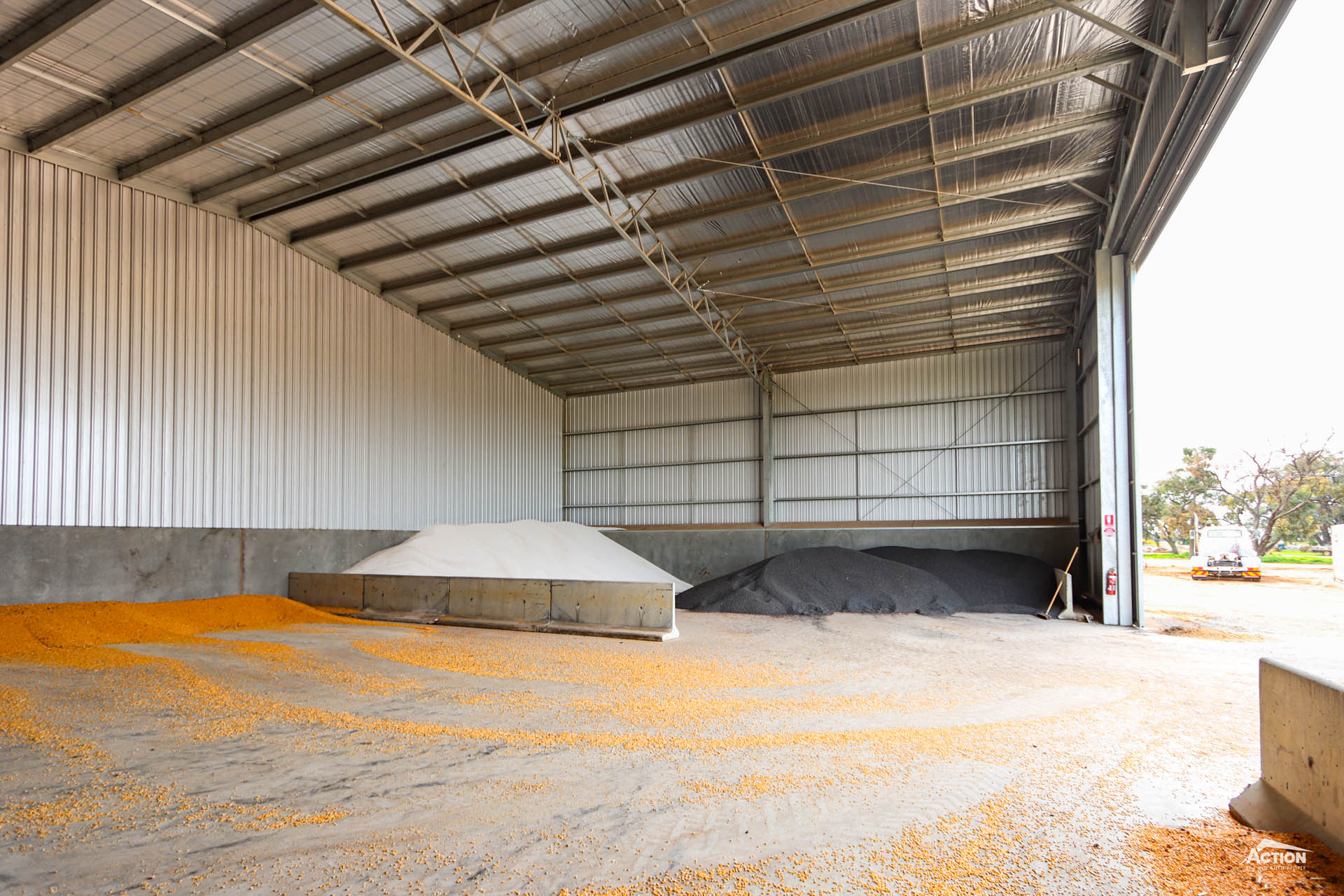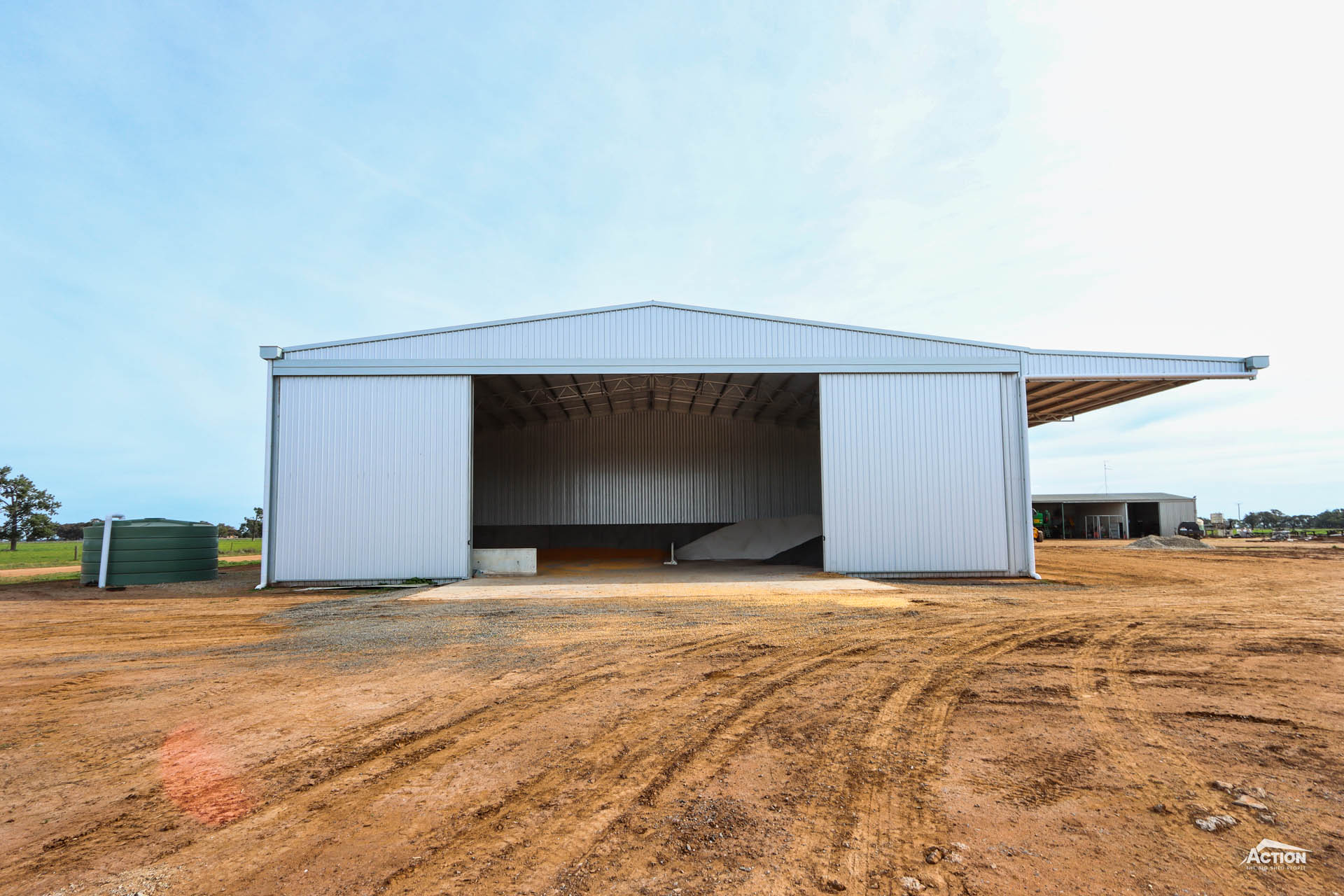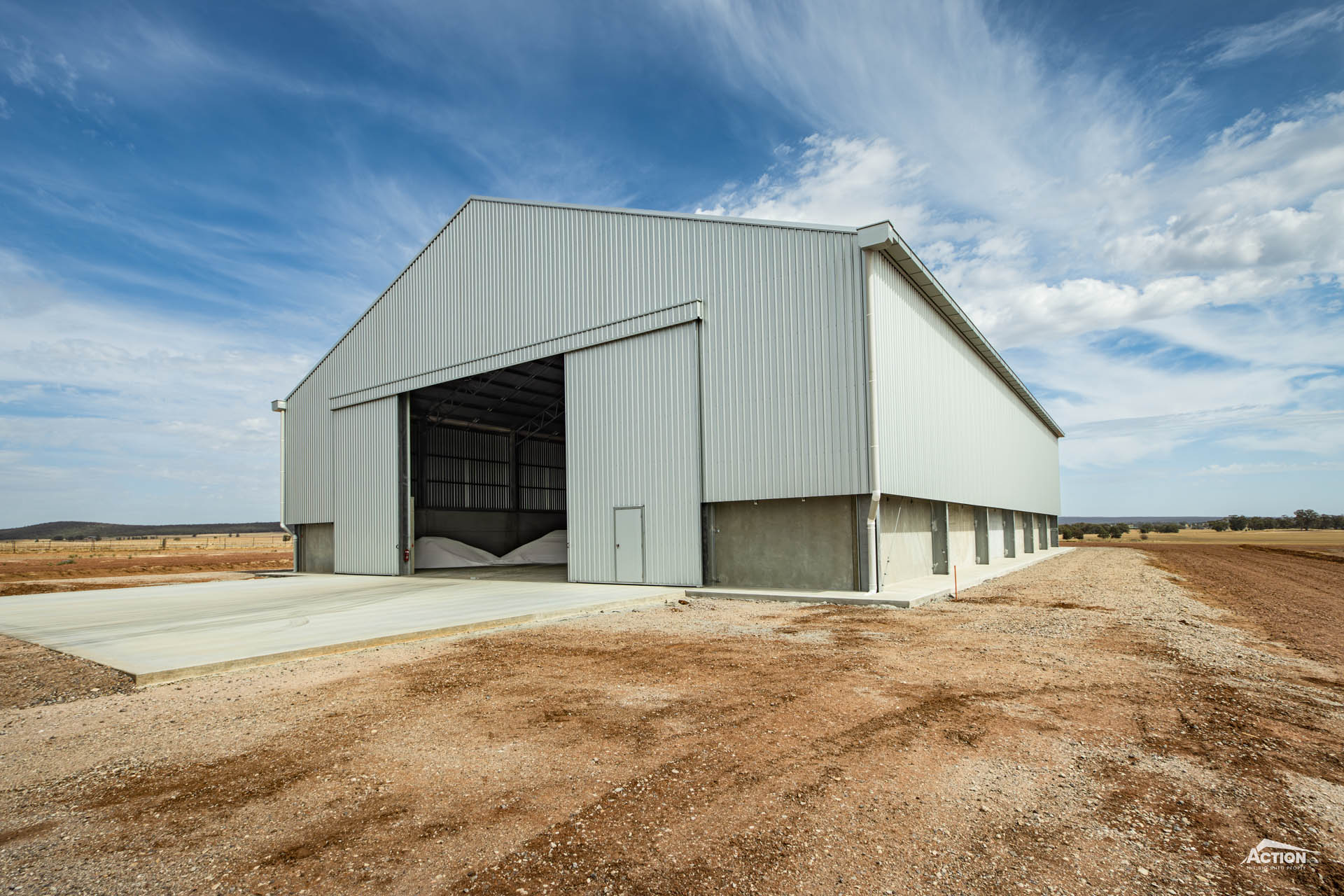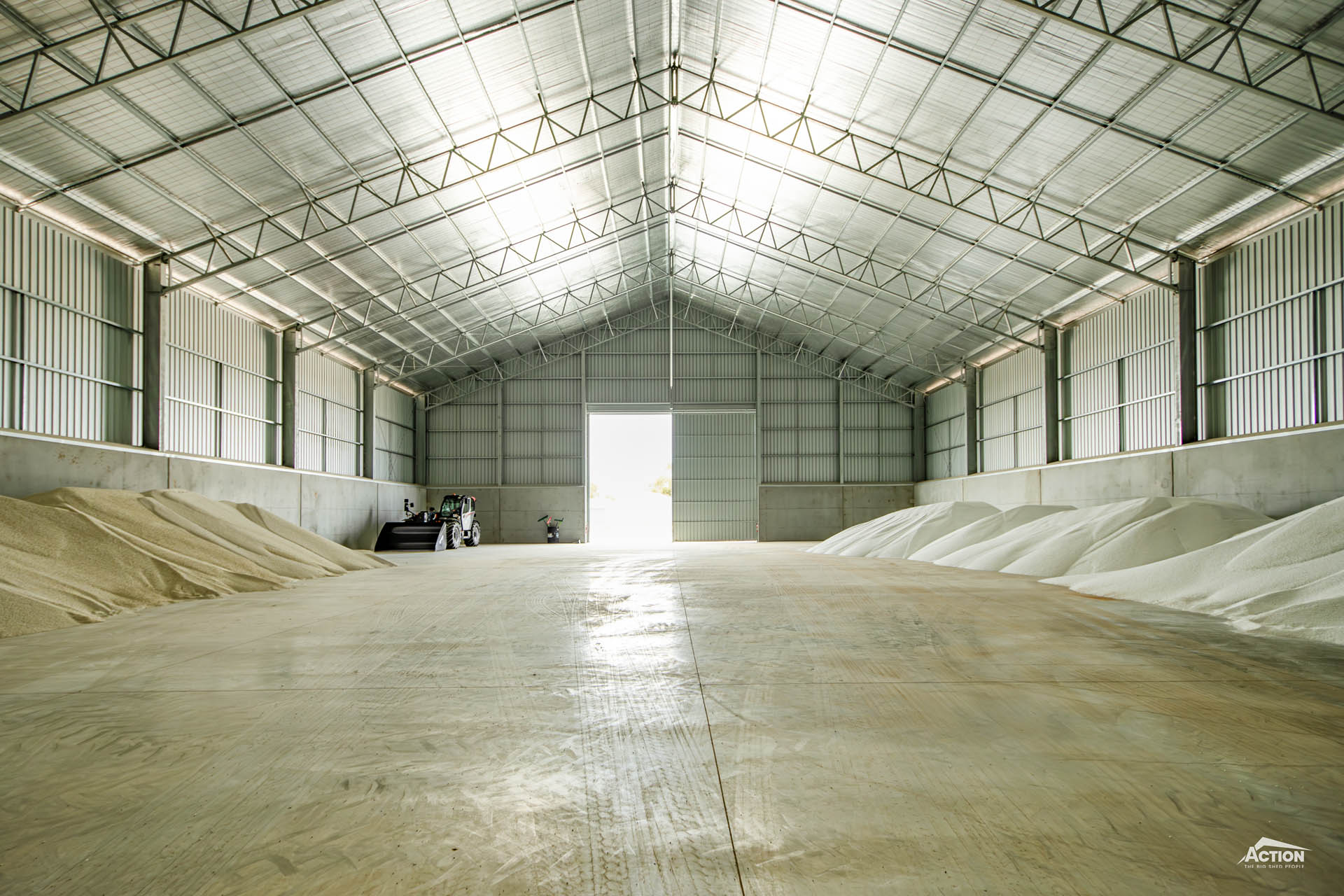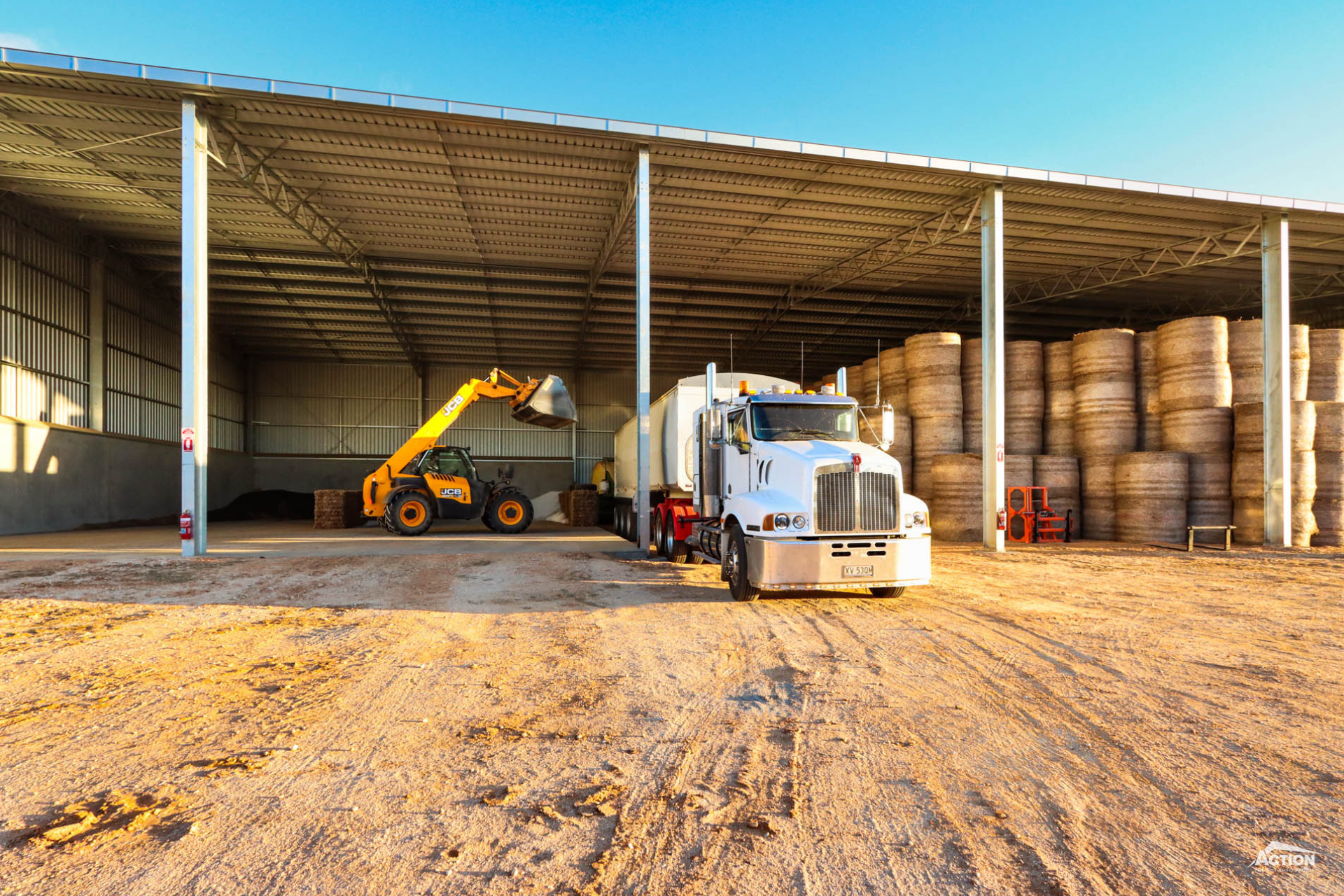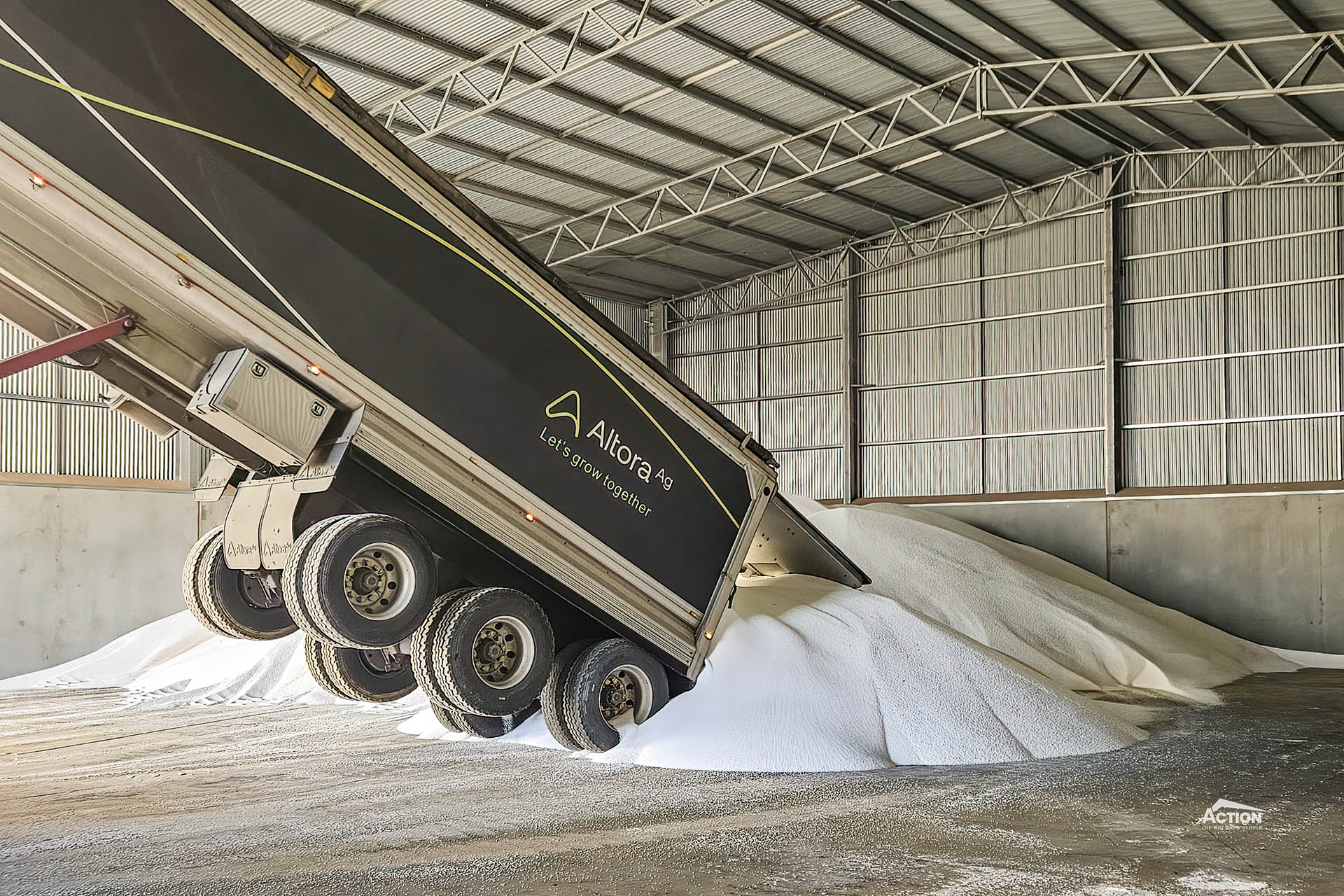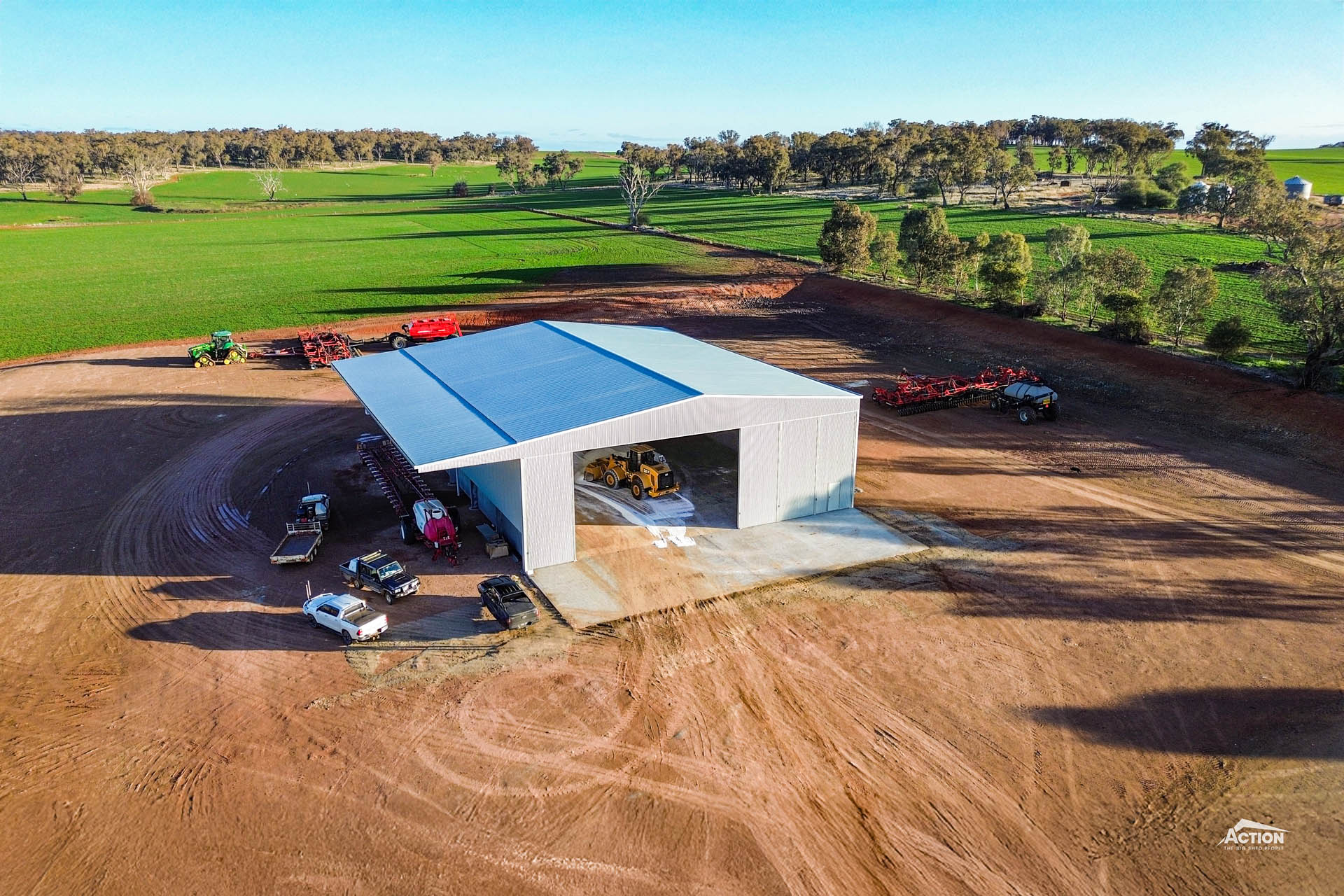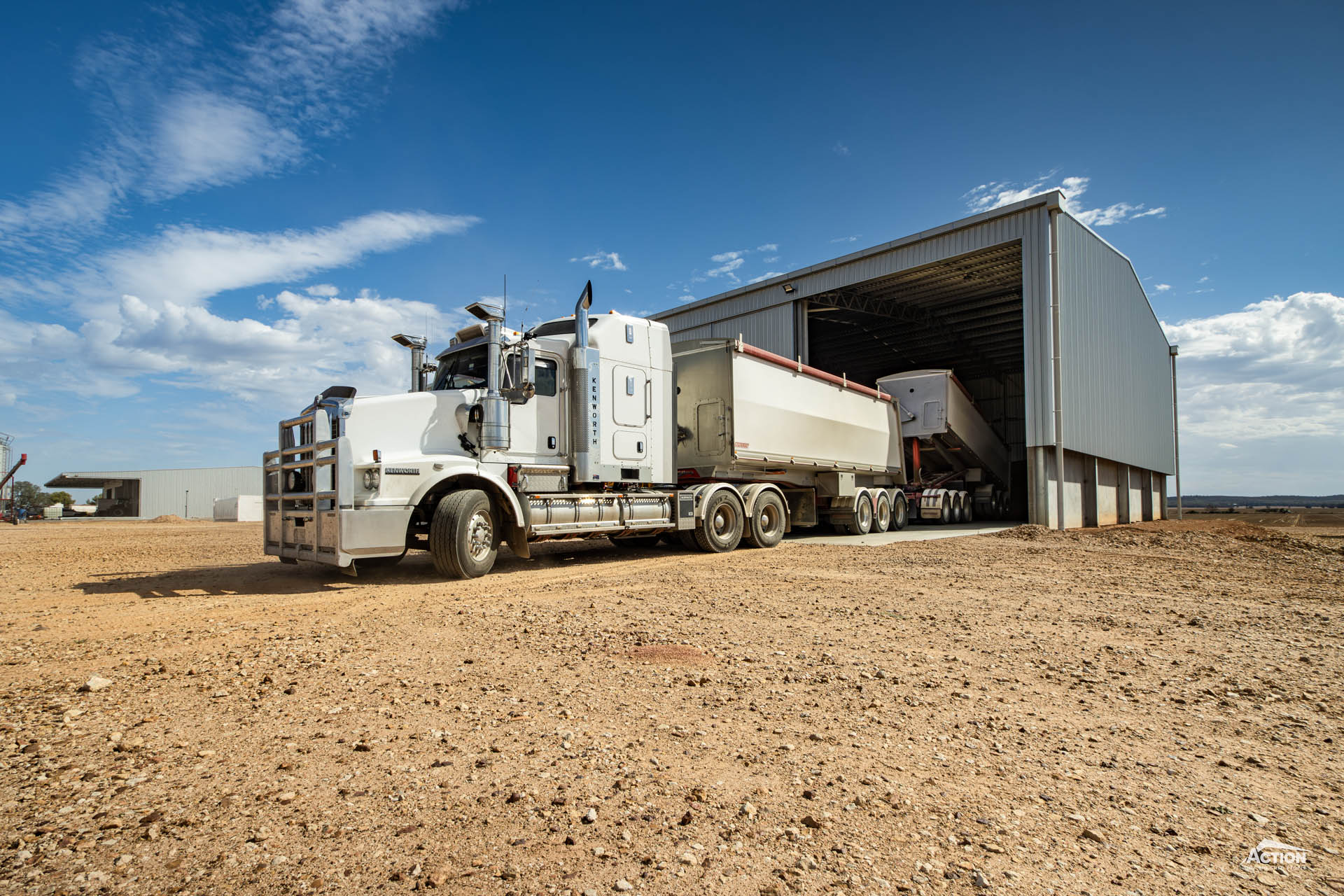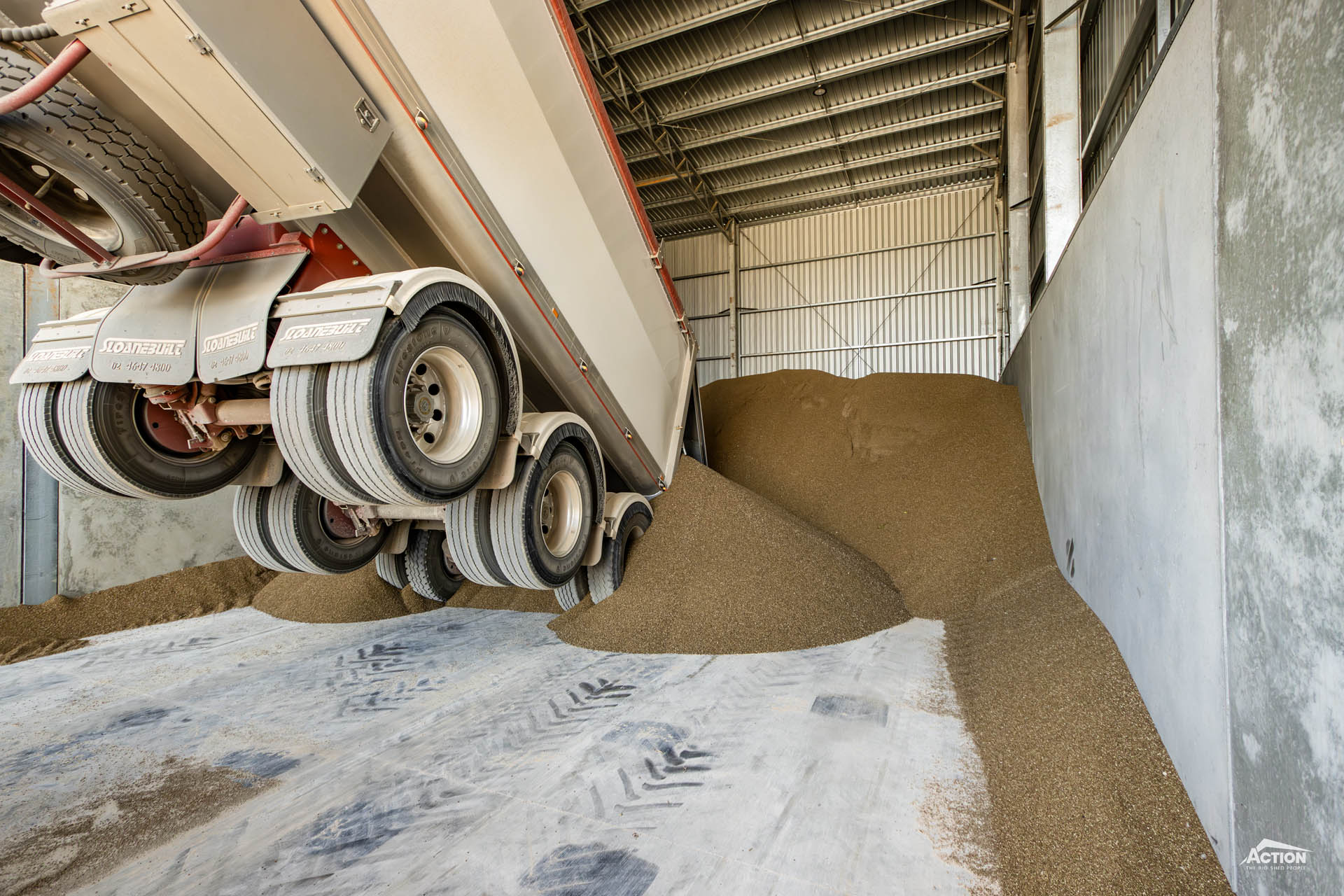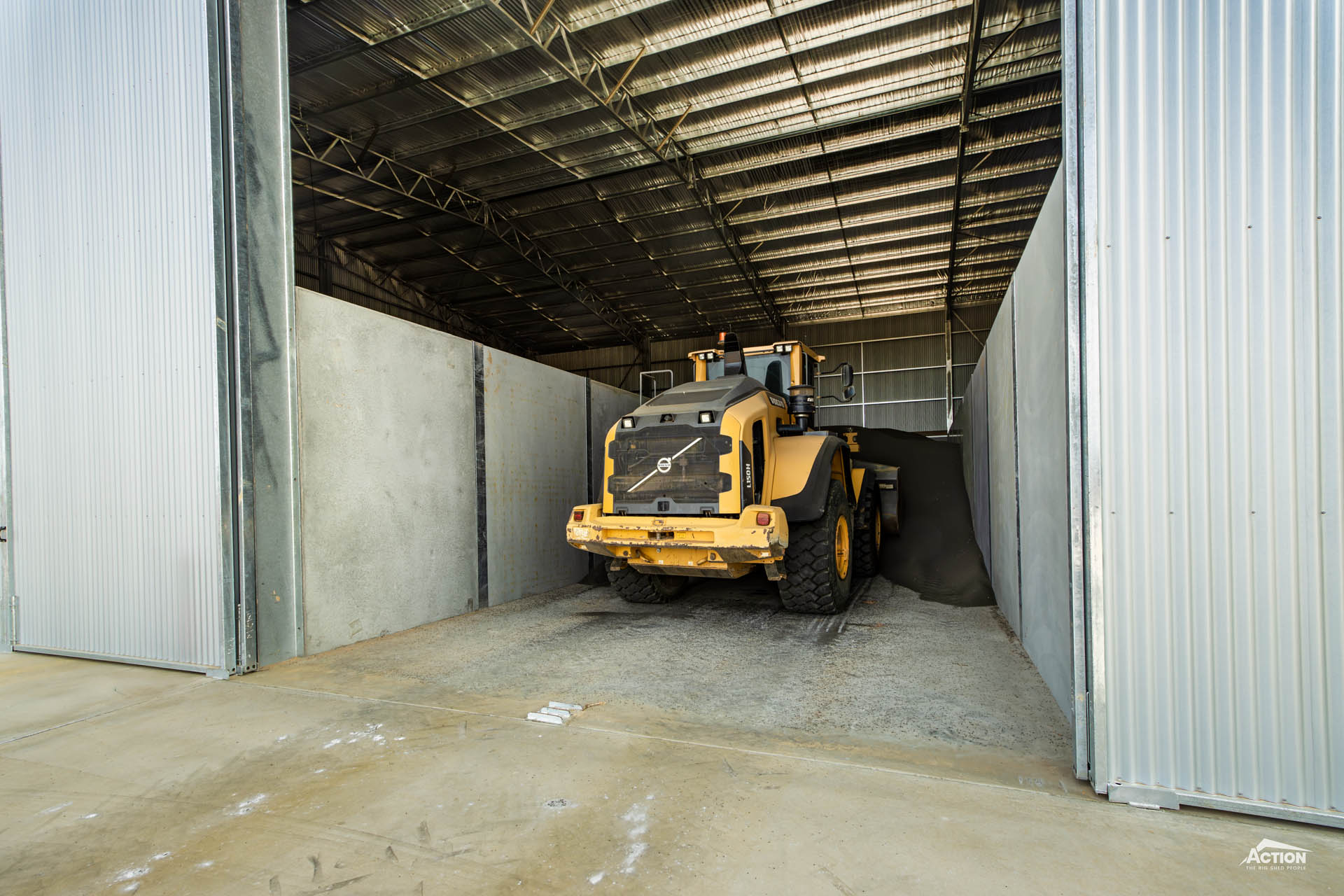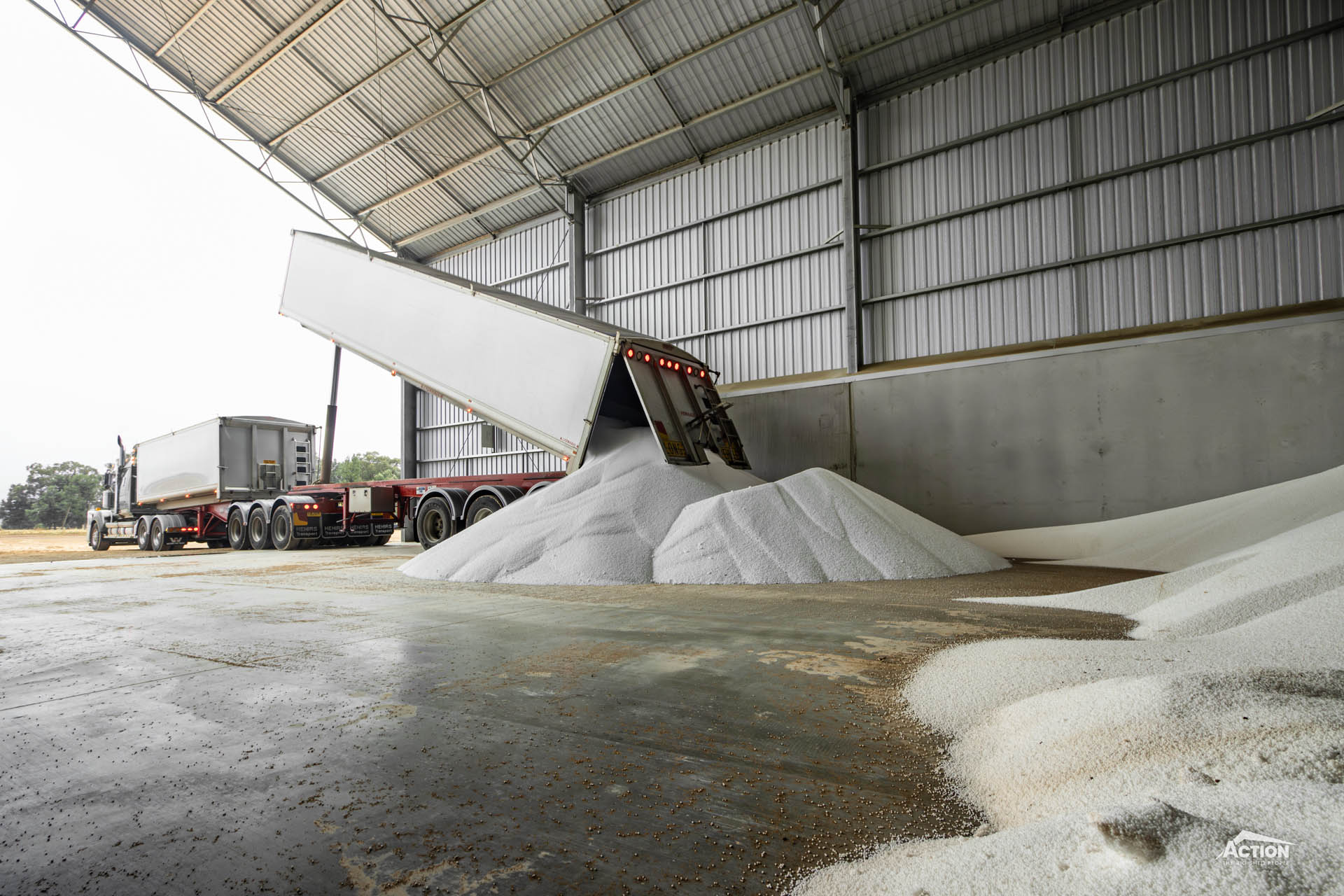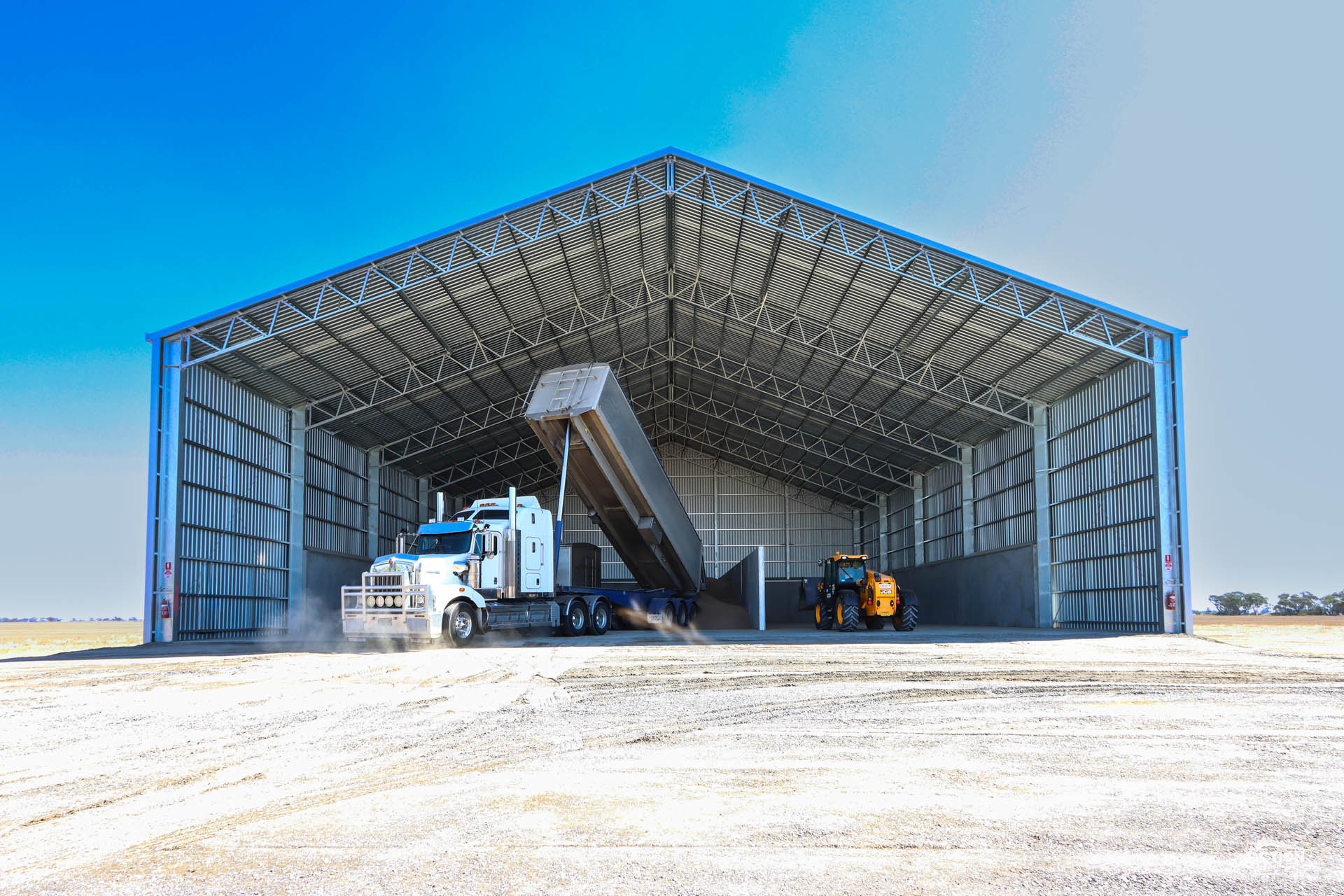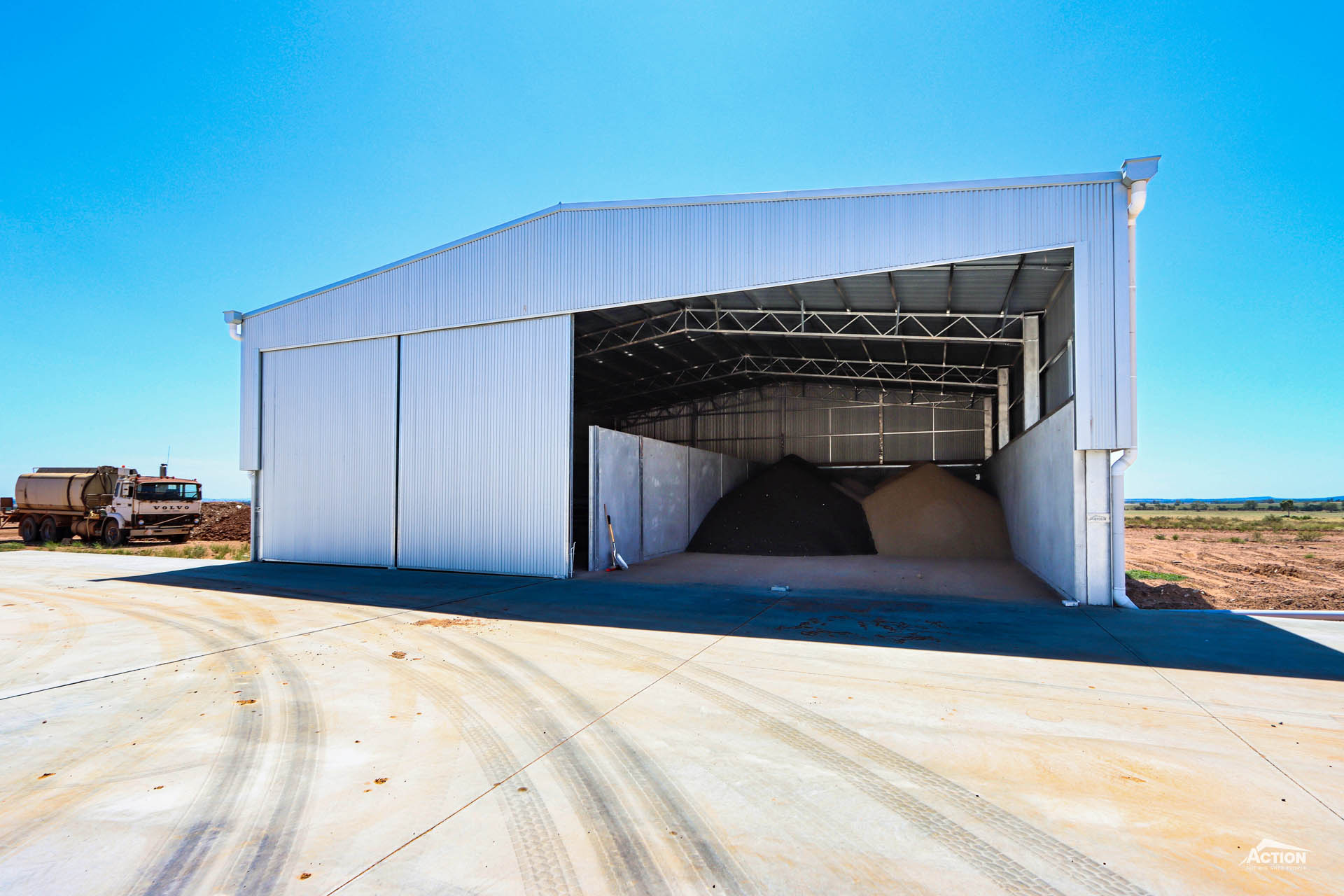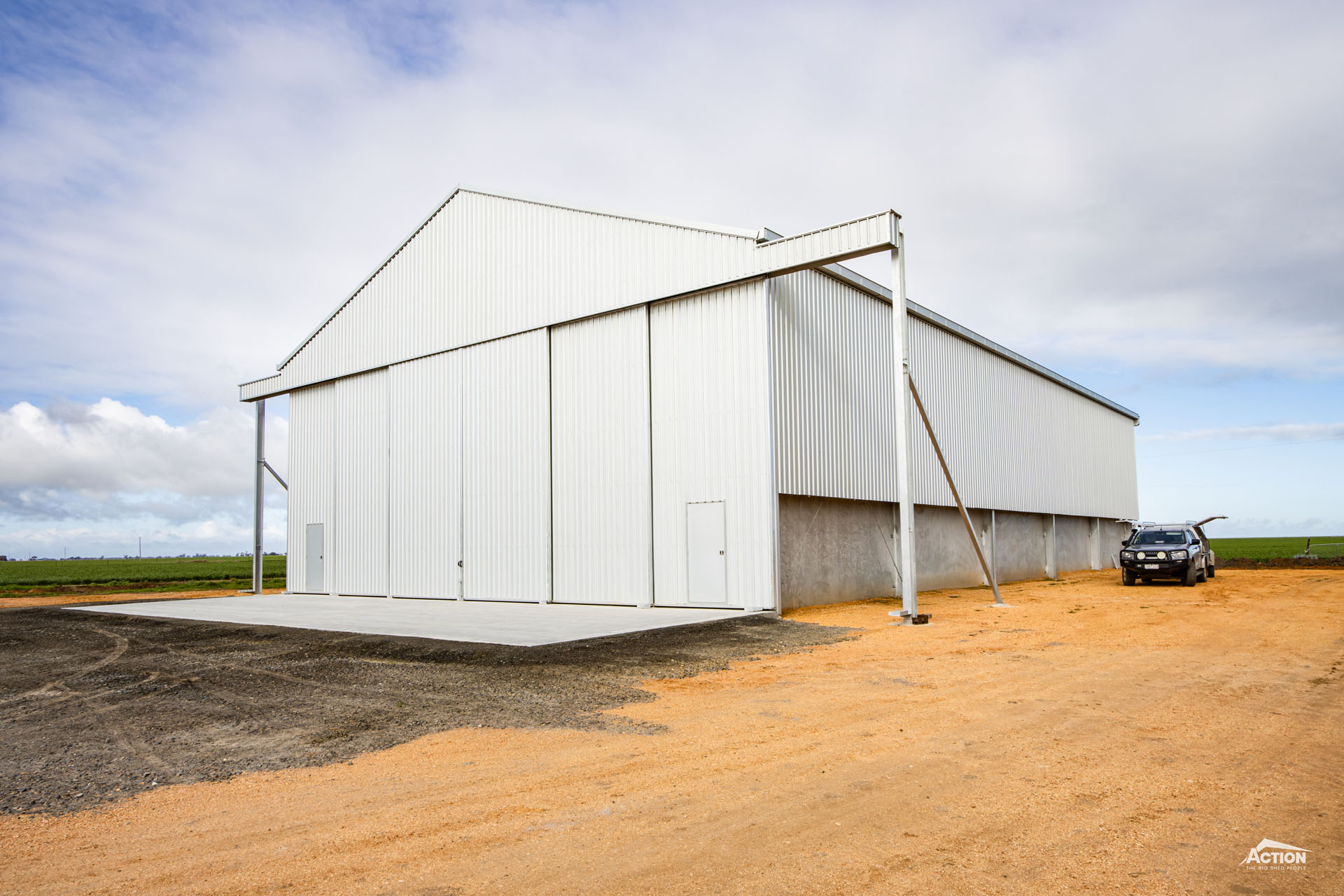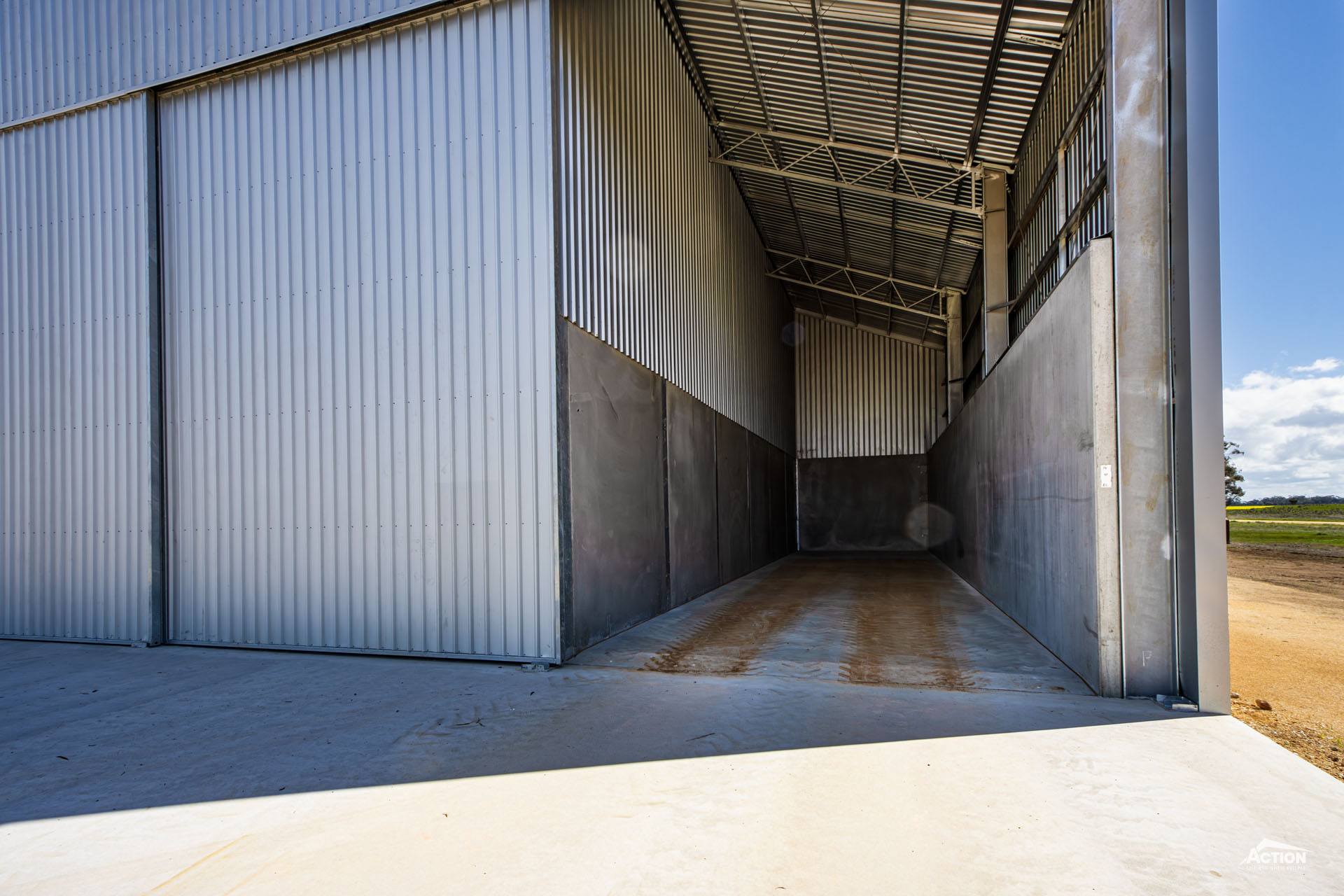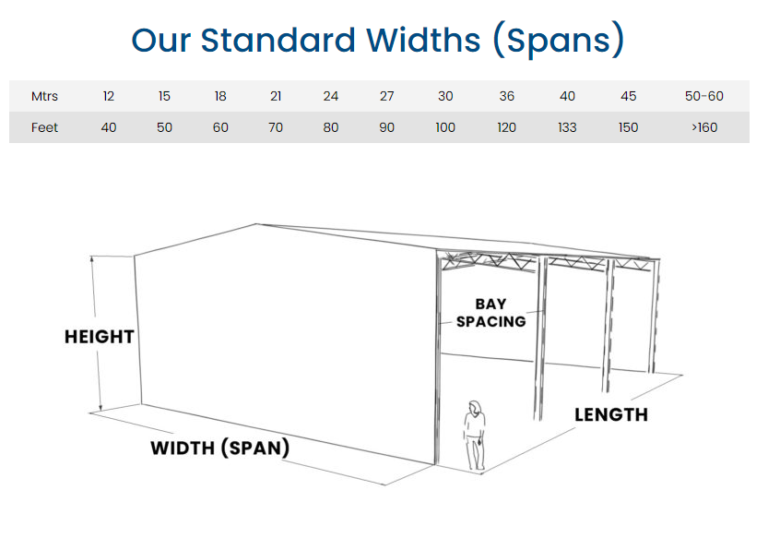Are purpose-built fertiliser sheds worth it?
Are you weighing up your fertiliser shed options?
Are you wondering if a purpose-built fertiliser shed is feasible for your operation? Or, should you be creative with a multi-use design or by retrofitting your existing shed infrastructure?
You aren’t alone.
These are all conversations our building consultants are having with smaller to medium-sized cropping operations and mixed enterprises.
While the popularity of fertiliser sheds has increased over the past few years, volatile prices (due to the Iran-Israel conflict) and silo collapses have consolidated fertiliser sheds as essential infrastructure in 2025.
With these issues still fresh in their mind, growers are looking to store smarter in 2026.
Many of these growers want to take advantage of safer storage, forward purchasing of fertiliser and saving time at cropping – but are unsure whether to commit to a purpose-built fertiliser shed.
And that’s understandable.
If you only need to store 100 tonnes, a 1000-tonne fertiliser shed is unnecessary – especially if the shed is designed solely for fertiliser storage.
And smaller purpose-built fertiliser sheds have a higher cost-per-tonne, often making the investment difficult to justify.
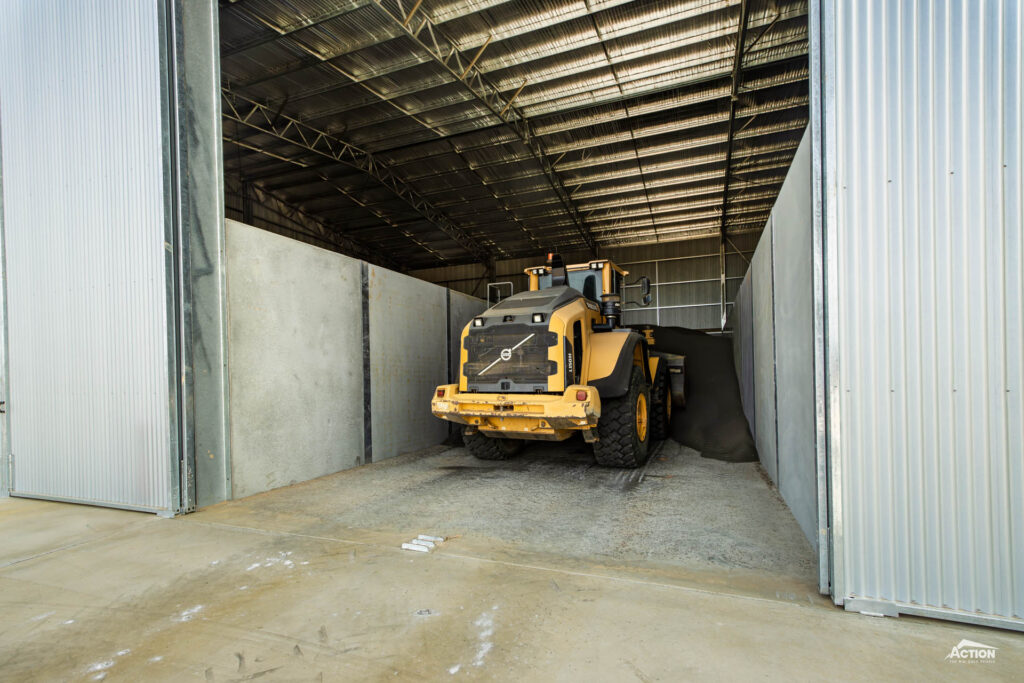
At the same time, repurposing an existing shed will reduce your overall on-farm storage capacity, and this can be a backward step for operations looking to grow.
Similarly, co-storing in a multi-use shed can bring its headaches.
So, what is the best option?
In this article, we discuss the pros, cons and prices of:
- Retrofitting a shed with concrete panels
- Building a multi-use shed
- Going all out with a purpose-built fertiliser shed
The aim is to help you confidently decide what is best for your operation.
Frequently Asked Questions About Fertiliser Sheds – Answered
Quick answers to the top questions about purpose-built fertiliser sheds
The best fertiliser shed design is one that:
- Effectively protects fertiliser from the weather
- Is safe and easy to load and unload
- Uses concrete panels to protect the cladding from corrosion and machinery damage
Several designs can achieve this, with the top three being
- Fully enclosed with access to side bays
- Fully enclosed with access to both gable ends
- Fully enclosed or three-sided with access to one gable (The standard Action fertiliser shed design)
The best design for your fertiliser shed will depend on what product/s you are storing, how much you are storing, and how you plan to load and unload the shed.
There are several ways you can customise your fertiliser shed design to make sure it works for you.
These include:
- Increasing the height to allow tipping inside the shed
- Using a steep roof pitch to increase clearance inside the shed
- Installing sliding door outriggers to provide a wide opening and protect the doors from machinery damage
- Segregating your fertiliser with permanent concrete panels or movable l-walls
- Adding a concrete apron for easy clean up and access year-round
The best size for your fertiliser shed will depend on:
- The number of products being stored (and how you plan to segregate them). For example, permanent segregating walls will reduce the overall capacity of your shed.
- The volume and bulk density of the product/s being stored. For example, the bulk density of Urea (at 750kg/M3) is approximately the same as storing 1/3 MAP (1000kg/M3) and 2/3 Urea combined.
- How you load and unload the shed. For example, you may need to increase the height of your shed to allow tipping inside.
- The design of your shed. For example, if you choose an open gable design you may choose to increase the length of the shed by a bay for extra weather protection. Or you may need to increase the height of your shed to accommodate the sliding door beam.
Based on these considerations, here are some sizes that often work well:
- 12m (W) x 18m (L) x 6m (H). Stores approx. 400 tonnes.
- 18m (W) x 24m (L) x 6.75m (H). Stores approx. 1000 tonnes.
- 18m (W) x 32m (L) x 6.75m (H). Stores approx. 1500 tonnes.
You may also find the fertiliser shed size calculator here, helpful.
The best way to segregate your fertiliser shed is with concrete panels, and there are two options for this: Permanent panels and movable L-walls.
If you have a clear understanding of your current and future storage requirements, permanent segregating concrete panels are a great option for purpose-built fertiliser sheds.
However, it is worth noting that permanent walls will reduce the overall capacity of the shed.
In contrast, movable L-walls provide you with much more flexibility in how you use the storage space.
Action Steel manufactures both panels and L-walls in-house, providing control over the quality and cost compared to using a third-party supplier.
The average cost of fertiliser shed projects in 2025 so far is around $285,000.
The cost typically ranges from $125,000 for smaller scale storage to $500,000 or more for a bulk storage facility.
The cost of your project will depend on factors like size, design, location and how you choose to customise your shed.
Still have questions? Our building consultants have answers!
Watch the fertiliser shed FAQ video here – or reach out on 1800 687 888 for project specific advice.
We also recommend downloading the Standard Fertiliser Shed Size & Price Guide for more information on designs, capacity and cost.
Purpose-Built Fertiliser Shed Versus Multi-Use Shed Or Retrofit?
Now let’s look at your three options for storing fertiliser in a shed.
1
1. Retrofitting A Shed For Fertiliser Storage
Can I retrofit my hay shed with concrete panels? Will the frame need strengthening?
Yes, concrete panels can be retrofitted to an existing shed for fertiliser storage.
For example, you could retrofit 3 metre panels to one or more bays of an open-front shed and use L-walls for segregation.
This will allow you to buy fertiliser ahead of time before prices peak and provide safe storage compared to silos.
The structure of your existing shed will need to be considered, though.

Advantages Of Retrofitting A Shed For Fertiliser Storage
- It is a cost-effective way to achieve a smaller storage capacity by using the shed infrastructure you already have.
Disadvantages Of Retrofitting A Shed For Fertiliser Shed
- Retrofitted panels cost more than panels in a purpose-built fertiliser shed. This is because additional steelwork is required to accommodate the panel and fertiliser loadings.
- Reduces current shed capacity and may change how you can use the shed. For example, you may require the space for hay at harvest. Or you may not feel comfortable storing your machinery in it.
- It may not be the ideal design for loading and unloading. For example, limited clearance height can be frustrating and inefficient at busy times of the year, like cropping.
- A change in shed use may change the coverage of your insurance policies. It would pay to check with your insurance company!
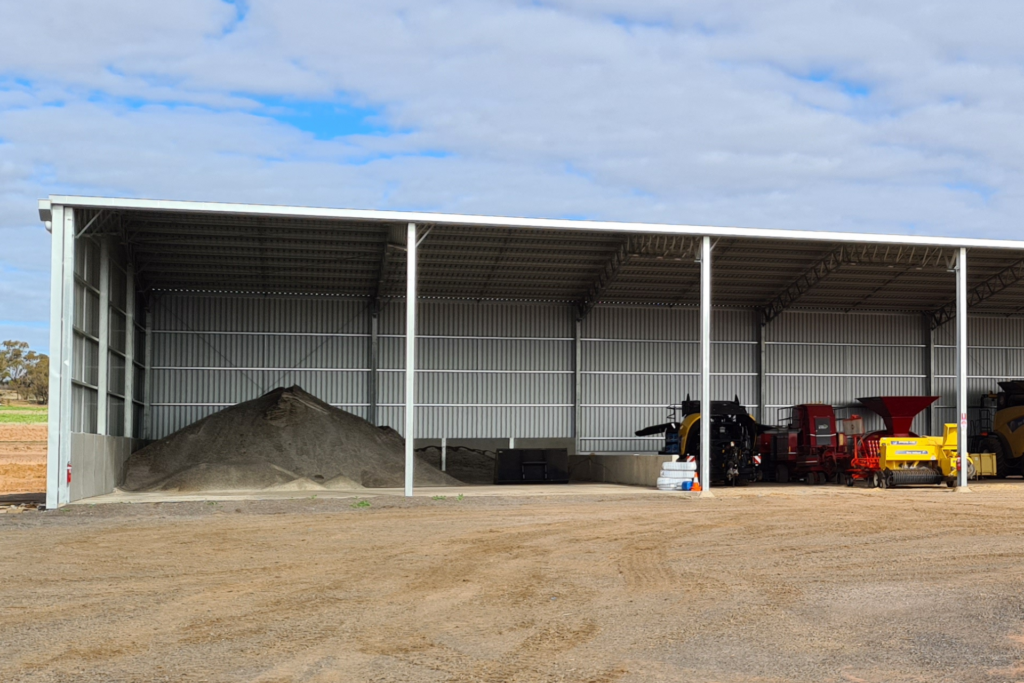
2025/26 Price Guide For Retrofitting Panels
How much does retrofitting a shed with concrete panels cost?
The cost to retrofit panels to your shed will depend on:
- The panel size
- The number of panels
- The amount of additional steelwork required
As an example, the cost to retrofit one bay in your 48m x 24m open front hay shed with 3-metre-high concrete walls, a concrete floor and the additional steel required is approx. $100,000 including GST and installation. Stores up to ~350 tonnes
So, retrofitting your shed may be the right choice if you have excess shed space and only need small-scale fertiliser storage.
However, it’s always a good idea to weigh up all your options before making a decision – so let’s take a look at multi-use sheds.
2
2. Multi-Use Sheds With Fertiliser Storage Space
Multi-use sheds with space for fertiliser storage have been popular in recent years.

There are several ways this can be achieved, with popular designs being:
- Open front sheds with concrete panels in one or more bays
- Open front sheds with a fully enclosed concrete panel bay (accessed from either the long side or the gable end)
- Fully enclosed sheds with a steep roof pitch, concrete panels and a large storage space that can be used for either grain or fertiliser (usually with movable L-walls for segregation)
These sheds have helped farmers increase on-farm safety, improve efficiency and avoid being impacted by volatile fertiliser prices and unreliable supply.

Watch and learn about John’s project here.
Advantages Of Multi-Use Fertiliser Sheds
- Can provide excellent value for money compared to building two standalone sheds.
- Designs can be easily customised to suit your operation. For example, you could consider including a cantilevered canopy for a temporary machinery storage area.
- Provide storage flexibility and allows you to respond to market conditions and changes in storage requirements.
- Help you identify storage gaps and plan infrastructure. For example, if you find yourself using your shed for temporary grain storage, it may indicate that a dedicated grain shed would be a good fit for your operation.
Disadvantages Of Multi-Use Fertiliser Sheds
- Some designs will have a high cost per tonne, particularly if you are using the overall project cost to calculate this, i.e., not factoring in the other uses of the shed.
- Can limit what you store in your shed. For example, you may not feel comfortable storing machinery in a shed that has been used for fertiliser storage (especially if the storage areas aren’t separated)
- You may need to check your insurance covers co-storing.
- Shared traffic zones can be inefficient and a safety risk at busy times of the year.

2025/26 Multi-use Fertiliser Shed Price Guide
How much does a multi-use fertiliser shed cost?
The cost of a multi-use fertiliser shed can range from $150,000 to more than $450,000 including concrete panels, concrete slab, GST, delivery and installation.
The cost of your project will depend on:
- The shed design
- The shed size
- The number of panels
- The panel size
- How you choose to customise the shed
Below, we have listed some examples you can consider.
These show how the price can differ between sizes and designs.
- 32m (L) x 18m (W) x 6m (H) open front shed with one bay fully enclosed for fertiliser storage costs approx. $155,000 – $195,000 and stores approx. 250 tonnes.
- 40m (L) x 18m (W) x 7.5m (H) open front shed with 6m canopy and one bay fully enclosed for fertiliser storage costs approx. $205,000 – $250,000 and stores approx. 250 tonnes.
- 48m (L) x 24m (W) x 7.5m (H) open front shed with concrete panels to two open bays costs approx. $295,000 – $360,000 and stores approx. 860 tonnes.
- 48m (L) x 24m (W) x 7.5m (H) open front shed with two end bays enclosed for fertiliser and accessed from the gable end costs. approx. $305,000 – $375,000 and stores approx. 650 tonnes.
You could also consider a large bulk storage shed with concrete panels and a steep roof pitch that can be used for either fertiliser storage or grain storage. This will have a much lower cost per tonne.
For example, a 39m (L) x 27m (W) full enclosed shed with concrete panels, slab and steep roof pitch would cost approx. $495,000 – $605,000 and store approx. 3,000 tonnes.
Please note that these price guides are general, are only intended as a budgeting tool and do not take the place of a formal quote. For accurate pricing for your project, please submit a REQUEST A QUOTE form.
There are some good reasons why multi-use sheds are so popular, especially when it comes to value for money.
If you have a clear understanding of your storage requirements going forward, a multi-use shed can be a no-brainer.
However, if you feel that this set-up could limit your future growth or if you are concerned about safety or insurance issues, then a purpose-built fertiliser shed might be the way to go.
3
3. Purpose-Built Fertiliser Shed
A purpose-built fertiliser shed is a shed built with concrete panels and a slab specifically for storing fertiliser.
This is a popular choice for cropping enterprises looking to store in bulk, safely, efficiently and cost-effectively.
The most common designs for purpose-built fertiliser sheds are:
- Fully enclosed with access to side bays
- Fully enclosed with access to both gable ends
- Fully enclosed or three-sided with access to one gable (The standard Action fertiliser shed design)
Sizes range from 200 tonnes to more than 4000 tonnes, and these can be segregated with either permanent concrete walls or movable L-walls.
Advantages Of A Purpose-Built Fertiliser Shed
- The bigger the shed, the lower the cost per tonne and the more opportunity to store in bulk and save money. As the saying goes, “Volume fixes everything”
- Provides versatility (especially fully-enclosed designs with a bulk storage area and segregating l-walls). This way, you can use the shed for one product, multiple products or use the shed for grain at harvest.
- Easily customised with concrete aprons, cantilevered canopies and different loading and unloading options.
- Improves safety and efficiency with one central storage spot with less traffic and less competition for shed space
- Improves your storage mix without impacting the capacity of your existing infrastructure.


Disadvantages Of A Purpose Built Fertiliser Shed
- Higher cost per tonne for smaller capacity sheds
2025/26 Purpose-Built Fertiliser Shed Price Guide
The cost per tonne for a purpose-built fertiliser shed ranges from around $100 per tonne (for large bulk storage sheds) to around $600 per tonne (for small-scale storage sheds).
To see how pricing varies between sizes and designs, download the Standard Fertiliser Shed Size & Price Guide.
This standard range includes sizes and designs for 200 tonnes, 400 tonnes, 500 tonnes, 1000 tonnes and 1500 tonnes.
For accurate pricing for your project, or if you are looking for information on options for storing more than 1500 tonnes, call us on 1800 687 888.
So, there is a lot to love about a purpose-built fertiliser shed!
It’s the safest, most cost-effective and efficient way to store fertiliser in bulk. And a large bulk storage area can be a versatile asset.
The main drawback is usually the high cost per tonne when storing smaller quantities of fertiliser. This does lengthen the payback period.
The Verdict! How Do Your Options Compare?
So, what is the best fertiliser shed option for you?
As we have discussed, there are pros and cons to all your options.
And as we have considered this, you may have arrived at what the best choice is.
Such as a bulk storage shed that can be repurposed for grain later.
Or a multi-use shed with clear separation between storage areas.
Or you may have calculated the payback period of a purpose-built fertiliser shed and found that it stacks up.
Or you may still be undecided.
If that’s the case, here are some questions to answer.
- What are my plans for growth? How much fertiliser do I need to store now – and in 3-5 years?
- Do I need a short-term or a long-term fix? What works best with my current storage? Will a retrofit reduce shed space?
- What is my budget? Do I need to work with cash flow?
- What are my operational priorities? Safety? Efficiency? Versatility? Taking advantage of market opportunities?
- Have I checked my insurance? And done the sums on forward purchasing fertiliser?
We trust this discussion has given you food for thought!
You may also find the resources listed below helpful – especially the discussion on ROI.
Useful Resources
- Inside A 2000 Tonne Segregated Fertiliser Shed
- How To Create A Versatile Fertiliser Shed Design
- What Are The Best Concrete Panel Sizes?
- The Benefits Of A Fertiliser Shed & How To Maximise ROI
- Grain Shed & Fertiliser Shed Calculators
- 2025 Fertiliser Shed Guide (PDF Download)
Fertiliser sheds aren’t going anywhere!
Already popular infrastructure projects in 2025, multi-use sheds and purpose-built fertiliser sheds are set to become essential for safe and profitable enterprises.
Want to stay ahead of the game?
Need help running the numbers? Looking for prices on different options?
Take the guesswork out of fertiliser storage!
Reach out to our building consultants for best-practice advice and pricing. Call us on 1800 687 888 or email us at [email protected] – we would love to hear from you!


